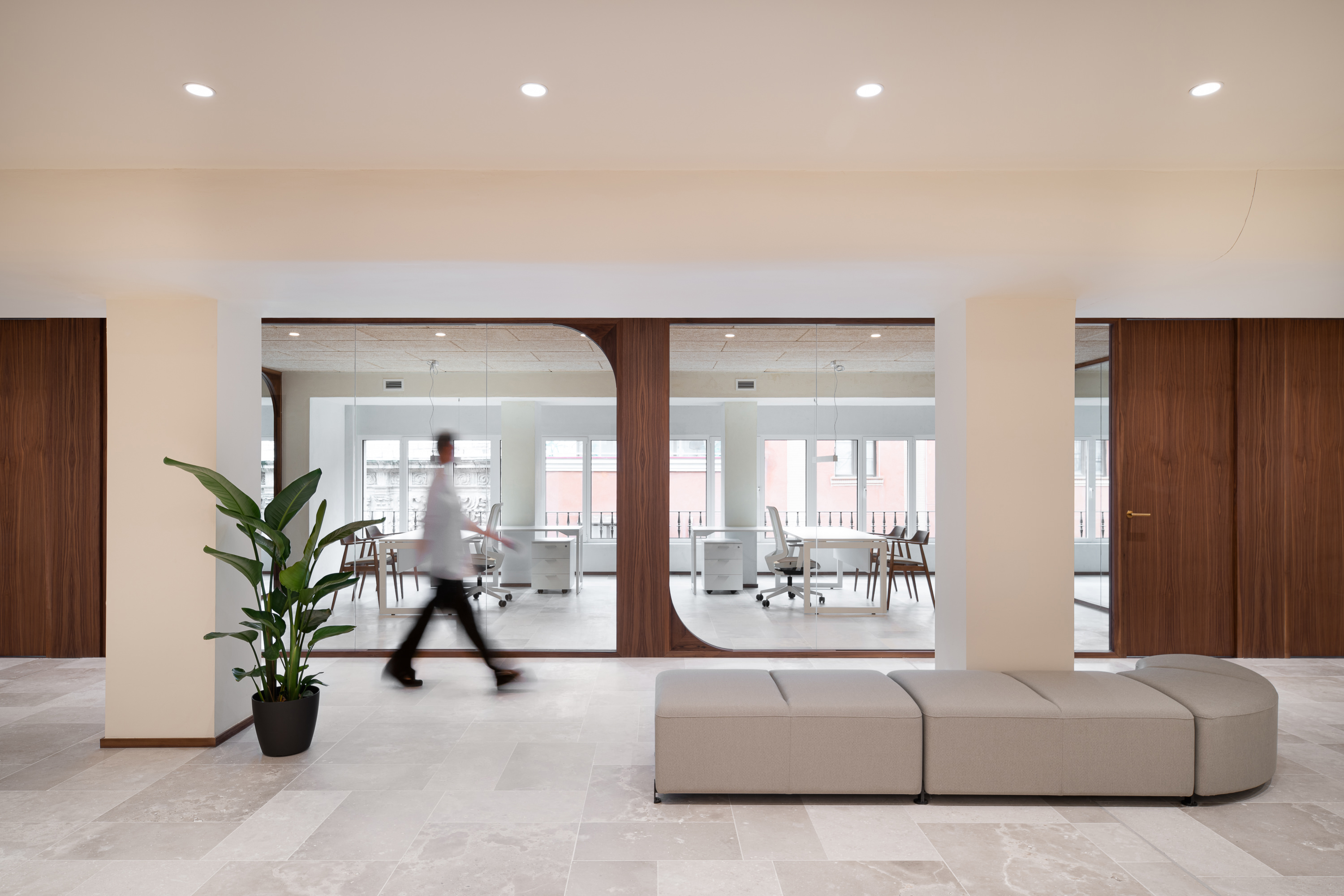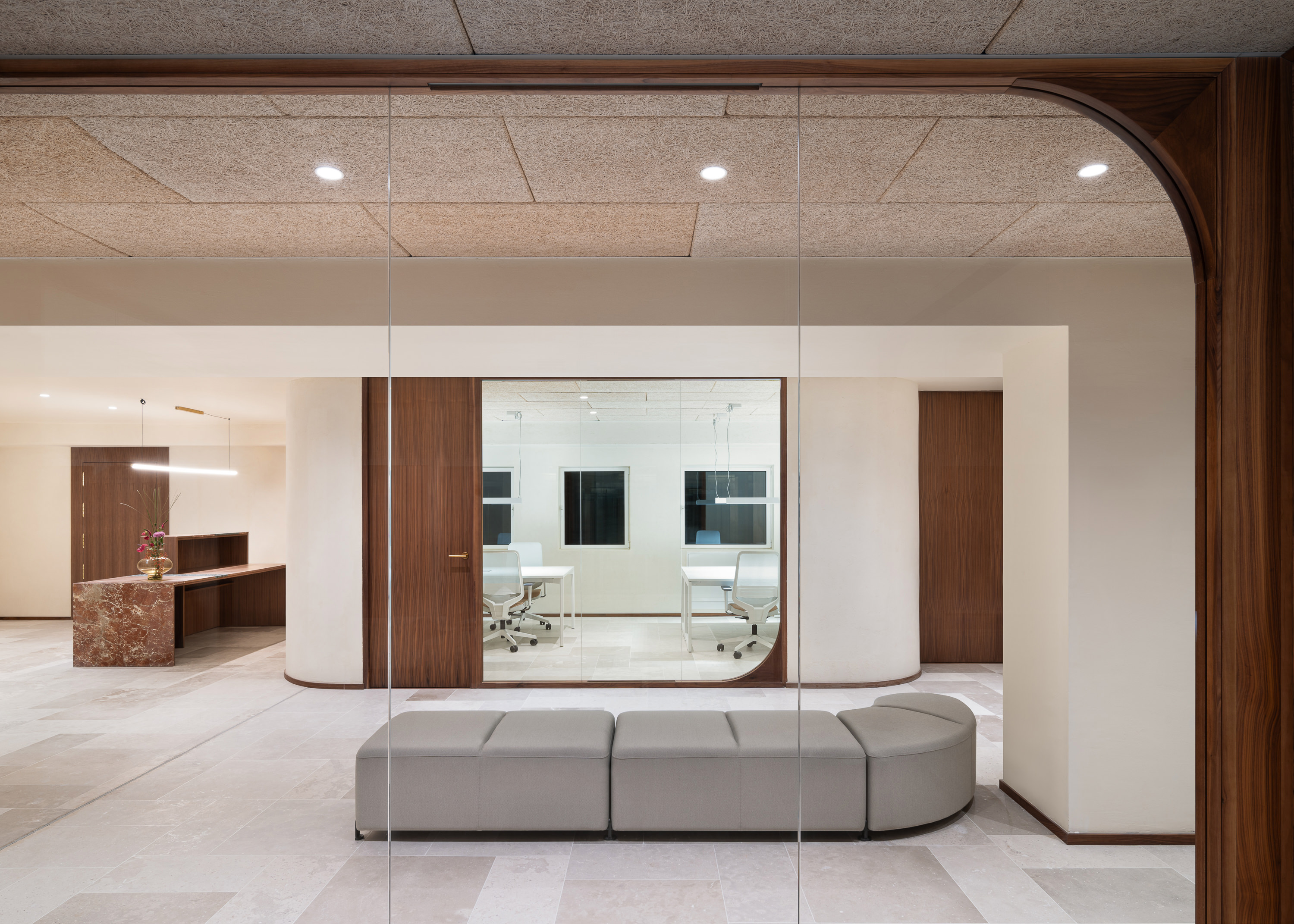Healthcare SERIES • Project FEATURE
Architecture with Memory – Colegio Oficial de Medicos de Valladolid by Estudio Coloma
Photography by Gabriel Gallegos Alonso
Interior Design by Estudio Coloma
Furniture by Capdell
Furniture by Forma 5
Furniture by Carsan Ebanisteria
Milwork by Carsan Ebanisteria

The project is a thoughtful exploration of resource-conscious design, blending noble materials and traditional techniques while reimagining inherited elements through a modern lens.
This is a design that breathes and invites occupancy — capable of supporting institutional activity without sacrificing beauty or memory. It’s a quiet, restrained, and generous architecture that brings dignity to the space without extravagance or unnecessary gestures. Salvaged marble, American walnut wood, and locally sourced stone engage with natural light to shape a space that is functional, elegant, and deeply human. The original floor plan was highly compartmentalized, limiting functionality and darkening interior circulation. Estudio Coloma addresses this initial condition with a clear strategy: to open the space, invite natural light, and establish a more coherent, fluid visual experience. Physical and symbolic barriers are removed to create an atmosphere of warmth, brightness, and openness.


"To recover the essential is not to look back, but to move forward with greater conviction."
In this new spatial layout, workspaces are arranged using American walnut partitions that define areas without enclosing them. This rich, dark wood offers an elegant contrast to the surrounding neutral palette and emphasizes the institution's gravitas. Organic forms in the joinery and circulation paths introduce a quiet formality that softens the rigidity of an administrative program. The flooring is crafted from Campaspero stone — a traditional material from the region of Valladolid — lending texture and continuity throughout the interior. Walls are finished with lime plaster, a breathable, mineral-based material that supports healthy indoor environments and aligns with the studio’s commitment to wellness and sustainability.


One of the most poignant gestures of the renovation is the reuse of original materials. Red and green marble, once part of the former reception desk, has been repurposed to create new furniture designs. The red marble now defines the more private areas — the boardroom and the president’s office — while the green marble takes center stage in the bar, offering a bold yet refined visual statement. This act of material reclamation is not merely a sustainable strategy but a philosophical one. It preserves the physical memory of the building while giving it contemporary relevance — proving that elegance can emerge from respect for what came before.


"When design builds on memory, every material tells a story that enriches the present."
The original library’s shelving has also been restored and integrated into the redesign, now serving as the college’s historical archive. As a preserved and repurposed element, it stands as a symbolic bridge between the institution’s past and its evolving future. The auditorium, a central space for institutional life, has been carefully redesigned to accommodate conferences and events with a contemporary layout. Clean-lined seating and a restrained palette underscore its representational character while ensuring a professional and welcoming atmosphere.


In terms of lighting, the design maximizes natural illumination through large glass panels and a thoughtful spatial arrangement. Artificial lighting has been precisely implemented to enhance comfort and highlight the textures and tones of the material palette. The result is a cohesive, harmonious, and highly functional whole. The architecture does not seek attention — it seeks longevity. It builds a narrative of quiet sophistication rooted in material honesty and meticulous detail, elevating the everyday experience for those who work and visit here.


From an editorial standpoint, this project stands out for its ability to bridge the tangible and the intangible. Its value lies not only in the refinement of its finishes or the elegance of its design, but in its ability to transform a bureaucratic building into a space with soul.


Estudio Coloma’s proposal proves that public architecture can be sensitive and human-centered, designed with respect for its users and the memory it carries. It’s a project that doesn't need spectacle to move — it does so through the sincerity of its materials and the clarity of its vision. In a context where institutional architecture often leans toward coldness and detachment, this renovation offers the opposite: warmth, intimacy, and beauty. A principled architecture that looks to the future while honoring its past.

